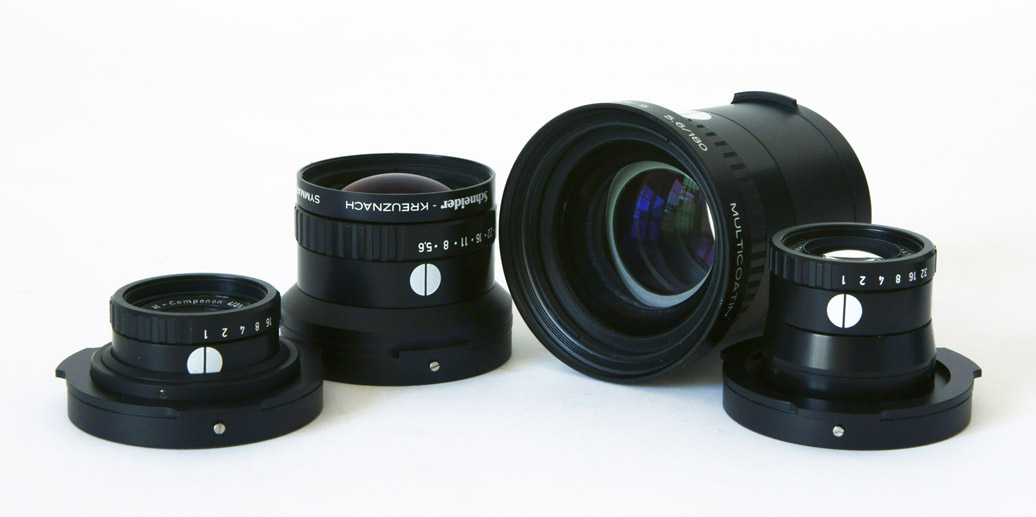by TRA
The Macro Lenses
Two Schneider Kreuznach Symmar lenses and two M – Componon macro lenses are available in Exakta 66 mount. These are:
- the 135mm f/5.6 Symmar – SF and
- the 180mm f/5.6 Symmar S
-
both advertised as providing focus from infinity to
extremely close up
- the 28mm f/4 M – Componon and
- the 50mm f/4 M – Componon
-
both designed to give maximum magnification for close
ups only.

From left to right: M – Componon f4/28mm, Symmar – S f5.6/135mm, Symmar – S f5.6/180mm, M – Componon f4/50mm,
in Exakta 66 mounts
To see the technical specification of these lenses, click here (scroll down).
Aperture
values of Macro-Componon lenses
One of Schneider’s brochures on the Macro-Componon lenses
states:
“Instead of ordinary f-stops, M – COMPONON lenses are
engraved with an aperture graduation which for a specified
reproduction ratio and aperture allows easy conversion of
the exposure time found to a different working
aperture. Table 2 indicates the actual relative
apertures … corresponding to the apertures engraved on the
lenses.”
Note that half stops are indicated by a dot on the lens aperture ring.
In my humble opinion, this is a crazy way to label a
lens, so here is my conversion to f/ stops: